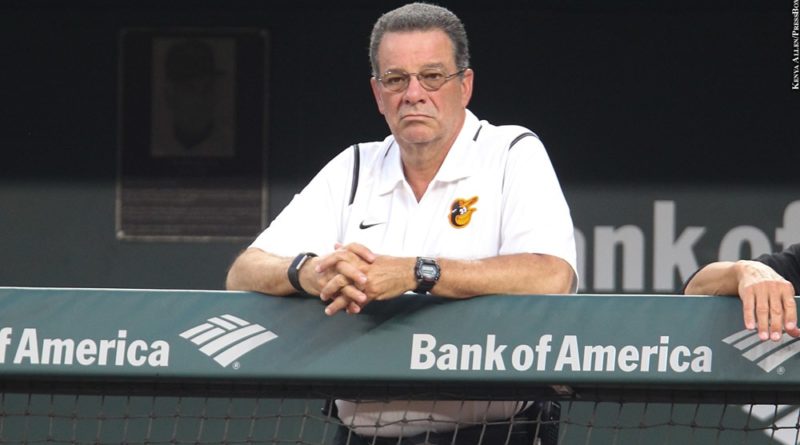By Mike Lurie
As Cal Ripken circled Oriole Park on Sept. 6, 1995, celebrating with fans after his 2,131st straight game became official, longtime club trainer Richie Bancells took in the scene with a unique perspective.
Bancell’s first day in pro baseball was the same as Ripken’s. They experienced their inaugural opening day together in 1978, as members of the Orioles’ Appalachian Rookie League affiliate in Bluefield, W.Va. Therefore, few people — besides Cal Sr. and Bill Ripken — could say they had known Cal Jr. in a baseball setting this long.
“The night of 2,131 was kind of a blur,” Bancells said. “But the thing that made me most proud of him and proud of our friendship, was when he circled the stadium that night — it showed the kind of person he is.
“I remember thinking back to how our first day in pro ball coincided and how, since Bluefield back in 1978, nothing about him had changed. He never changed in terms of how he felt about people and treated people.”
As Ripken came up through the Orioles’ system, he quickly displayed a thorough attention to detail on training matters.
“One of the things that was unique about him, and it went back to Triple-A, is that he was one of the first ballplayers I had [worked with] who had a keen interest in his body and how it functioned,” Bancells said. “He’d want to know, ‘What makes this work?’ and ‘What makes that work?’
“He was constantly asking me questions about the body and how something would work for him. You would think most athletes, since their body is their investment, would have a bigger interest in these issues. But not all of them do.”
No one knows that better than Tim Bishop, who joined the Orioles in 1993 as the strength and conditioning coach. That was the year of the infamous Sunday brawl with the Seattle Mariners, a Camden Yards melee from which Ripken emerged with a badly injured knee. It was one of the few threats to the streak that Ripken experienced.
“Obviously, that was the most publicized issue. But what sticks out to me is all the other little things that added up,” said Bishop, who left the organization late in the 2006 season to establish his own personal training company. “What the reporters didn’t see was him on the training table when he was sick, or the black-and-blue marks all over his body just from the toll the game takes on you.
“But when it was time for BP (batting practice), he was just ready to go.”
Bishop considers Ripken something of an innovator in terms of baseball conditioning.
“One of the things we started doing was some interval sprinting on the treadmill. When he started getting toward the end of his career, that was a way of just keeping his legs under him,” Bishop said. “Cal was always ahead of his time. Now, every organization, I would guess, does interval training when its players run on the treadmill or outside. [Interval training helps athletes do] well in explosive power sports, I think that is why Cal played basketball in the offseason.
“There were many, many nights after a long day and a long night game, and after he signed autographs, that Cal and I would go out on the field after a game. It could be after midnight and he would do some of those sprints on the field.”
Both Bishop and Bancells can attest to early-morning visits at Ripken’s home in the offseason, be it for conditioning purposes or to work through the serious back problems Ripken experienced late in his career. They encountered a man who conveyed a strong appreciation for his family, a fervent interest in what would best advance his training goals, and a real sense of trust in the two men who helped keep him in peak condition.
“One thing that made me proud was how much he trusted me,” Bancells said. “If I said to him, ‘Cal, go stand on your head in the corner of the locker room for 20 minutes, it’ll make your knee better,’ he would have looked at me funny, but he would have done it.”
Originally published in “Ripken: From Aberdeen To Cooperstown, A Celebration Of A Hometown Hero” (PressBox, 2007).

